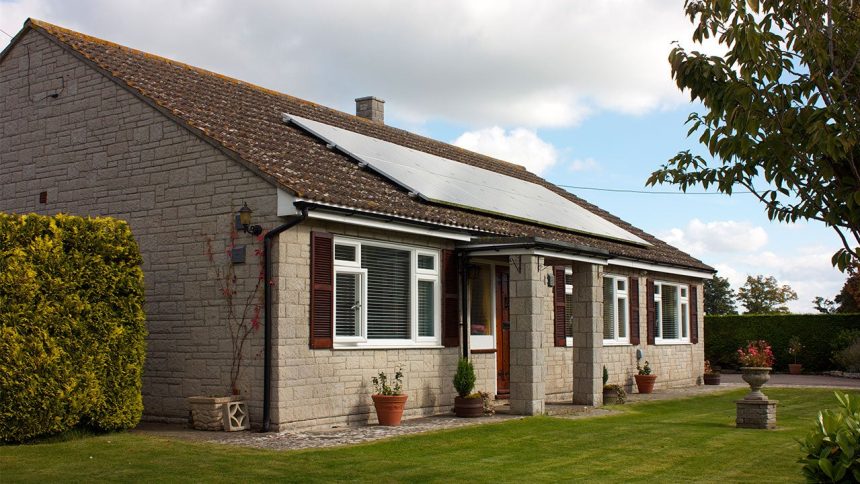Key takeaways
- To qualify for a home equity loan or line of credit, you’ll typically need at least 20 percent equity in your home. Some lenders allow for 15 percent.
- You’ll also need a solid credit score and acceptable debt-to-income (DTI) ratio.
- Lastly, lenders will want to see steady and adequate income, even if you have a lot of equity, and for you to be in good standing on your mortgage payments.
One of the biggest benefits of homeownership is the ability to build equity. When you accumulate enough, typically over time by paying down your mortgage, you can borrow against it through a home equity loan or home equity line of credit (HELOC). Here are the requirements to be eligible for either of these financing options in 2024.
What are HELOCs and home equity loans?
Both HELOCs and home equity loans allow you to borrow money based on the equity you have in your home. Here is a quick comparison between the two:
HELOC |
Home Equity Loan |
|
|---|---|---|
| Overview | A variable line of credit with a typical draw period of 5-10 years when you can pull out funds as needed | A loan for a fixed amount, delivered in a lump sum |
| Rates | Variable | Fixed |
| Terms | Up to 30 years (10-year draw period, 20-year repayment period) | 5-30 years |
| Repayment | Up to 20 years | Up to 30 years |
| Monthly payments | Interest-only during draw period, then principal and interest during repayment period | Principal and interest payments during repayment period |
| Benefits |
|
|
| Drawbacks |
|
|
HELOC and home equity loan requirements in 2024
Regardless of which type of loan you choose, home equity loan requirements and HELOC requirements tend to demand that borrowers have:
- A minimum percentage of equity in the home
- Good credit
- Low debt-to-income (DTI) ratio
- Sufficient income
- Reliable payment history
At least 20 percent equity in your home
Equity is the difference between how much you owe on your mortgage and your home’s value. This determines your loan-to-value ratio, or LTV.
To find your LTV, divide your current mortgage balance by your home’s appraised value. If your loan balance is $150,000, for example, and an appraiser values your home at $450,000, you would divide the balance by the appraisal for an LTV ratio of about 33 percent. This means you have 67 percent equity in your home.
When you apply this ratio to both your first mortgage and the HELOC or home equity loan, you get the combined loan-to-value (CLTV) ratio. This is the figure lenders use to determine how much equity you could be eligible to tap. Most lenders require you to maintain a minimum of 20 percent equity (although some allow 15 percent).
Using the example above, say you’d like to take out a home equity loan for $30,000. Your combined balances would equal $180,000 ($150,000 first mortgage + $30,000 home equity loan). This translates to a 40 percent CLTV ratio ($180,000 / $450,000), which is under the lender’s 80 percent maximum.
Why it’s important
Maintaining at least 20 percent equity in your home buffers you against downturns in the housing market. If your home were to decline in value and you didn’t have a decent amount of equity, you could end up owning more on your home than what it’s worth, making it difficult to sell. The 20 percent equity standard is also important for lenders: It lowers their risk.
Credit score in mid-600s
Many lenders allow you to tap your equity with a credit score in the 600s (680 once was common, but the norm is now closer to 620, especially for HELOCs). You won’t get the best rate with a lower score, however.
Some lenders also extend loans to those with scores below 620, but these lenders might require you to have more equity or carry less debt relative to your income. Bad credit home equity loans and HELOCs could come with higher interest rates, limited loan amounts and shorter repayment periods.
Why it’s important
A credit score of at least 740 helps you get the best interest rates, which could save you a substantial amount of money over the life of a home equity loan. A better score can also improve your odds of loan approval.
Before applying for a home equity product, take steps to maintain or improve your credit score. This involves making timely payments on loans or credit cards, paying off as much debt as possible and avoiding new credit applications.
DTI ratio of 43 percent or less
The debt-to-income (DTI) ratio is a measure of your gross monthly income relative to your monthly debt payments, including your mortgage and home equity loan payments. Qualifying DTI ratios can vary from lender to lender, but, in general, the lower your DTI, the better. Most home equity lenders look for a DTI ratio of no more than 43 percent.
Why it’s important
Lowering your DTI ratio can help improve your odds of qualifying for a home equity loan or HELOC. Paying down existing debt could also boost your credit score, further strengthening your application.
To calculate your DTI ratio, divide your total monthly debt payments by your gross monthly income, then multiply that result by 100 to get a percentage. If that percentage exceeds 43 percent (or whatever your lender’s specific threshold is), you have a few options: You can work to pay off as much debt as you can; increase your income; or lower the loan amount.
Adequate income
There isn’t a set income requirement for a HELOC or home equity loan, but you do need to earn enough to meet the DTI ratio requirement for the amount of money you’re hoping to tap. You’ll also need to prove that you have income consistently coming in.
Why it’s important
A steady income indicates to lenders that you’ll be able to make payments on your loan. Plus, the higher your income, the easier it’ll be to lower your DTI ratio.
Be prepared to provide income verification information when you apply for your loan, such as W-2s and paystubs.
What are home equity rates expected to do in 2024?
Like interest rates in general, HELOC and home equity loan rates are forecasted to drop in 2024 — especially the lines of credit, which broke the psychologically high 10 percent barrier late last year. This decline primarily reflects the Federal Reserve cutting its benchmark rates, explains Greg McBride, Bankrate’s chief financial analyst. McBride expects the Fed to make two rate cuts in 2024, though when exactly depends on economic news: specifically, how inflation and the job market are performing. “As long as the inflation data cooperates, the Fed has teed things up to start cutting interest rates as soon as their next meeting in September,” says McBride.
So, while rate cuts may be coming in 2024, they’ll likely happen later than sooner, says Melissa Cohn, regional vice president for William Raveis Mortgage — and go on for a prolonged period. “Because the first rate cut has been so delayed, that means the last rate cut will also be greatly delayed and may not happen until some point in 2026,” she says.
Understanding home equity loan rates
Home equity loan and HELOC rates change based on many factors and vary by lender.
Many lenders tie these rates to the prime rate, which is influenced by Federal Reserve policy. Since 2022, the Fed has been increasing rates to ease inflation, and HELOC and home equity loan rates have followed suit.
Generally, home equity loan rates tend to parallel mortgage rates, but run a few percentage points higher — mainly because lenders consider home equity loans and HELOCs to be riskier. Here’s why: with a mortgage, the lender is usually first in line to get repaid if the borrower defaults or goes bankrupt. However, with a home equity loan or HELOC, the lender is often in second position, meaning they get paid back only after the primary mortgage lender. As a result, lenders charge slightly higher interest rates to make up for the greater risk of potential loss.
FAQ about HELOC and home equity loan requirements
-
- Personal loans: A personal loan is a lump sum of money with a fixed interest rate and fixed monthly payment. The repayment term can last from one to seven years. Although most personal loans are unsecured — meaning you don’t need to put up collateral to get one — there are also secured personal loans.
- Zero percent intro APR credit cards: When you use a zero percent intro APR credit card, you’ll avoid paying interest on purchases during an initial promotional period, often between six and 21 months. Just be sure to pay off the debt in full during the promotional period, or else you’ll be charged interest.
- Family loans: Family loans are simply loans from relatives. This can be a good option if a family member is willing to lend you money at no or low cost. Keep in mind, though: Not repaying the loan might harm your relationship with your relative.
-
A HELOC or home equity loan can be a good choice if you need money to pay for a home improvement project or consolidate high-interest debt. Since the loans are secured by your home, the interest rate is usually lower than the rates on unsecured credit, such as credit cards and personal loans. One major downside, though: If you default on the home equity loan, the lender can foreclose on your home.
-
No. You can typically borrow a maximum of 80 percent of your home’s equity. Some lenders will let you go as high as 85 or 90 percent.
Read the full article here
















